2002 North Main Street
Santa Ana, California 92706
TEL: 714.567.3600
Paul Lauritz: Striking Gold
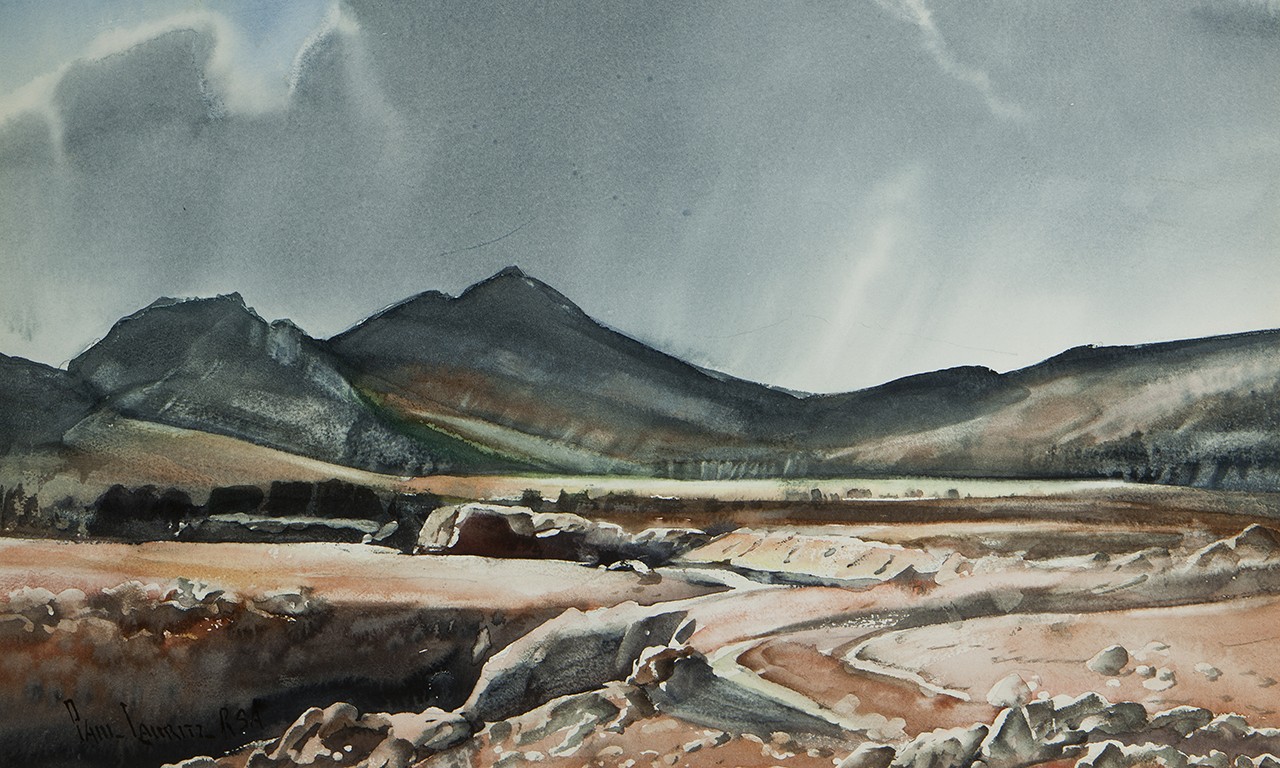 |
| Detail of Untitled, mid 20th Century Paul Lauritz (Norwegian, 1889 - 1975); California Watercolor on paper; 20 × 26 in. 2018.6.19 Ann and Bill Cullen Memorial Collection |
Contemporary-Traditional Artist
This week has seen the opening of the Bowers’ second featured summer exhibition: the California Art Club’s 112th Annual Gold Medal Exhibition. In honor of the occasion, the Bowers Blog takes a look at Paul Lauritz (Norwegian-born American, 1889 – 1975), the club’s 17th President and the artist behind two watercolors and an oil painting in the Bowers’ permanent collection. Given that the California Art Club focuses on artworks that are painted in what is now called a contemporary-traditional style, the California regionalist school that Lauritz hails from is as relevant today as ever—even during his lifetime, his representational style was seen as being traditional when compared against abstract and post-modern works.
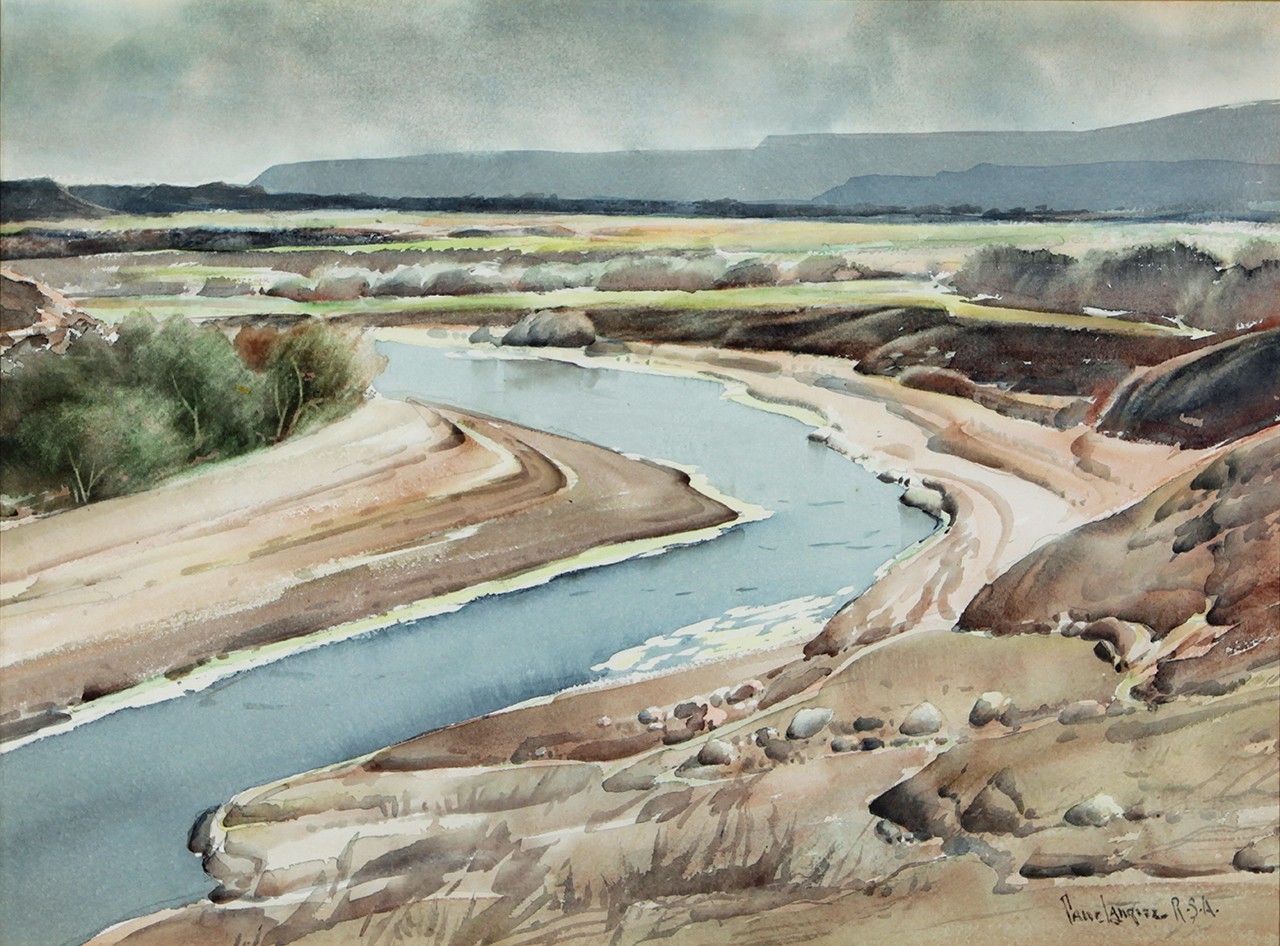 |
| Little Colorado River, c. 1946 Paul Lauritz (American, 1889-1975); Arizona Watercolor on paper; 32 x 39 in. 2001.32.6 Gift of Dr. Christian Title and Mrs. Joyce Title |
I, Me, Mine
Paul Lauritz was born in Norway in 1889. The city in which he was born, Larvik, sits on the eastern coast of Norway and was an ideal summer destination for many 19th century artists. At least one English watercolorist offered painting lessons to the young Lauritz in exchange for room and board in his family’s home. It was in Larvik that Lauritz met the Norwegian artists Fritz Thoulaw and Christian Krogh, who further stoked his interest in art. At the age of either 15 or 16 Lauritz left Norway to live with his sister in eastern Canada before continuing his journey westward as far as Vancouver. In 1912, working as a commercial artist in Portland, Oregon, he married a woman named May Potterton. Shortly thereafter, rumors of bountiful gold stores led the young couple up to Alaska. Though Lauritz tried to pick out a living in mining, he eventually gave up and returned to painting. He befriended and hosted a joint exhibition with the famous painter Sydney Lawrence before leaving Alaska for Los Angeles in 1919.
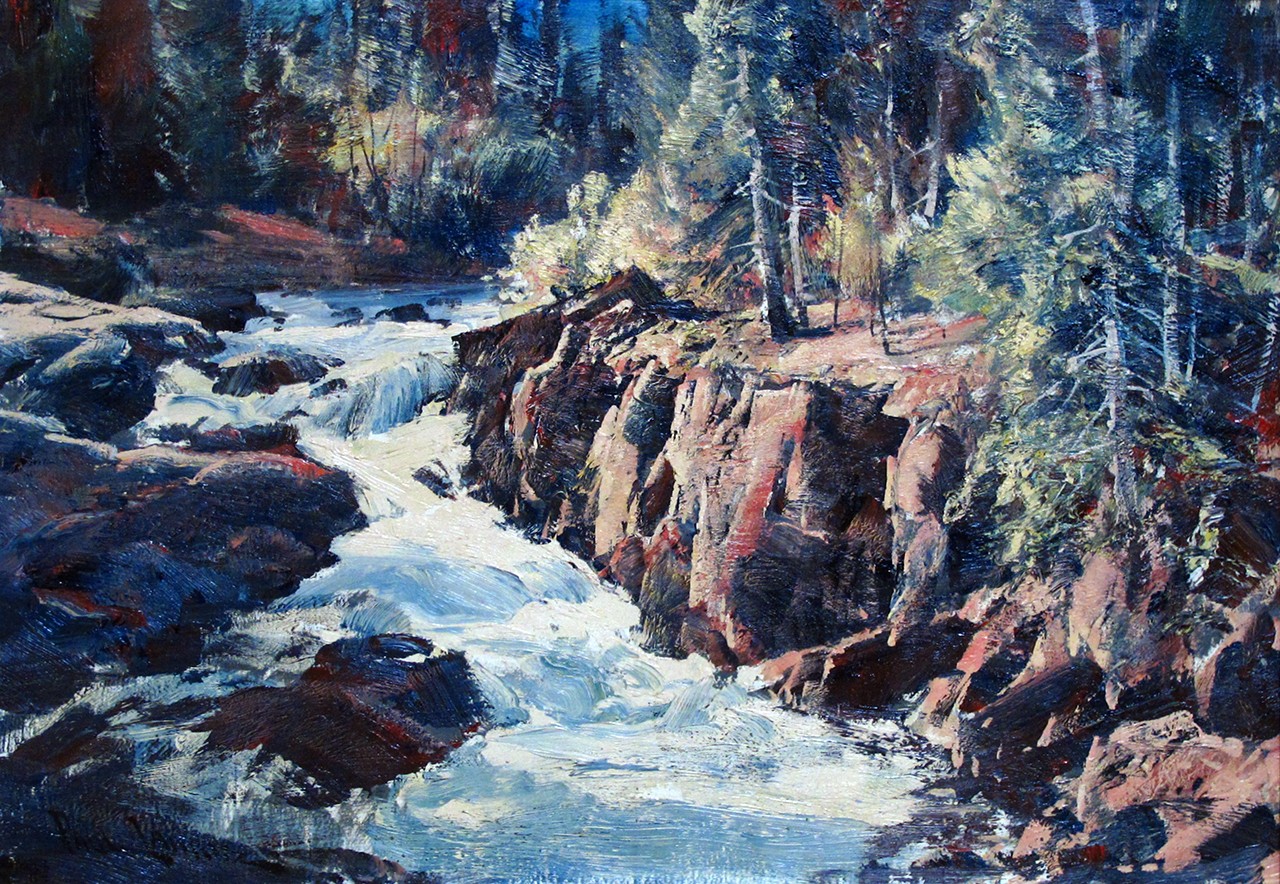 |
| Kawah Rapids, mid 20th Century Paul Lauritz (Norwegian, 1889 - 1975); California Oil on beaverboard; 34 1/4 x 24 in. 91.47.3 Gift of Dr. and Mrs. Christian and Joyce Title |
Sent by Sub
Lauritz thrived in the rapidly growing city of Los Angeles. In the early 1920s he painted portraits in his studio in the Lyceum Theater on Spring Street. He quickly learned, though, that his passion and talent was in landscape painting. The impulse to capture nature often swept him and his wife out of the city and into Los Angeles’ neighboring environs: the Mojave Desert, the Sierras, Carmel, the Central Valley, and Mexico were all frequent destinations. He went on to teach in Los Angeles, both at the Otis College of Art and Design and at the Chouinard Art Institute. A great many notable 20th century Californian artists, like Orpha Klinker, can claim Lauritz as a particularly important teacher in their formative period. Because he traveled abroad, he earned a reputation as an international lecturer. He got involved in just about every major local artist association—not the least of which is his aforementioned presidency of the California Art Club—as well as several groups outside of California such as the prestigious Salmagundi Club and the Royal Society of Artists, England. His paintings are in the collections of most Los Angeles area museums, as well as having been in the private collections of Dwight D. Eisenhower and the King of Norway. Whether a tall tale or the truth, it has been rumored that the King of Norway had his Lauritz brought from the United States via submarine during World War II.
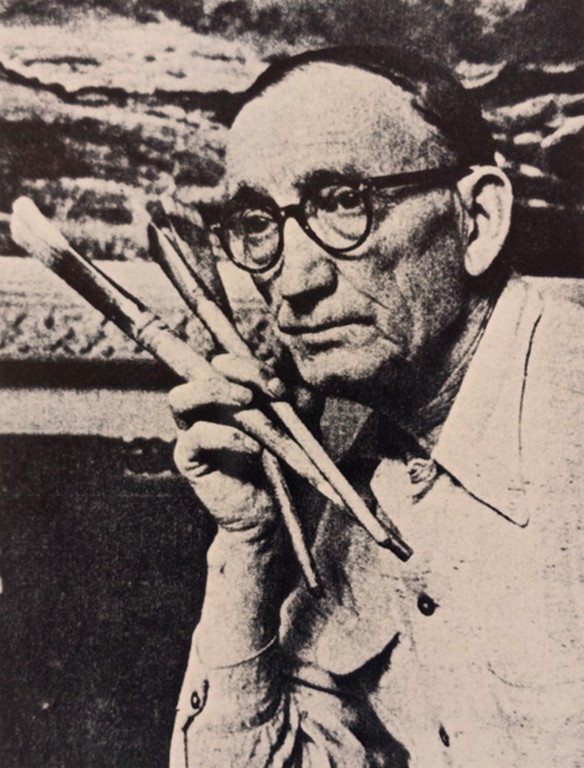 |
| Paul Lauritz as he appears in Ed Ainsworth’s 1960 Painters of the Desert |
Bigger Brush
Lauritz’ style is, at least based on several detailed written descriptions, unique and quite mesmerizing. There are accounts of him painting before audiences where he is described more as a practitioner of the magical arts than the fine arts. When he described his own process for painting marinescapes, he characterized it as a battle with the canvas—he was never exactly certain how things would end until it was over. Most of his painting started outdoors. He was, like many landscape painters before him, prone to drawing or painting a watercolor sketch en plein air and then returning to his studio to render scenes as large oil paintings. The best-known photograph of the artist, published in Ed Ainsworth’s 1960 Painters of the Desert, shows him holding the incredibly large brushes that he used for both the thick and slight brushstrokes of his oils. Artworks like the Bowers’ Kawah Rapids (almost certainly an alternate spelling of the Kaweah Rapids, just outside of Sequoia National Park) also demonstrate Lauritz’ use of a palette knife in creating texturing and adding shading.
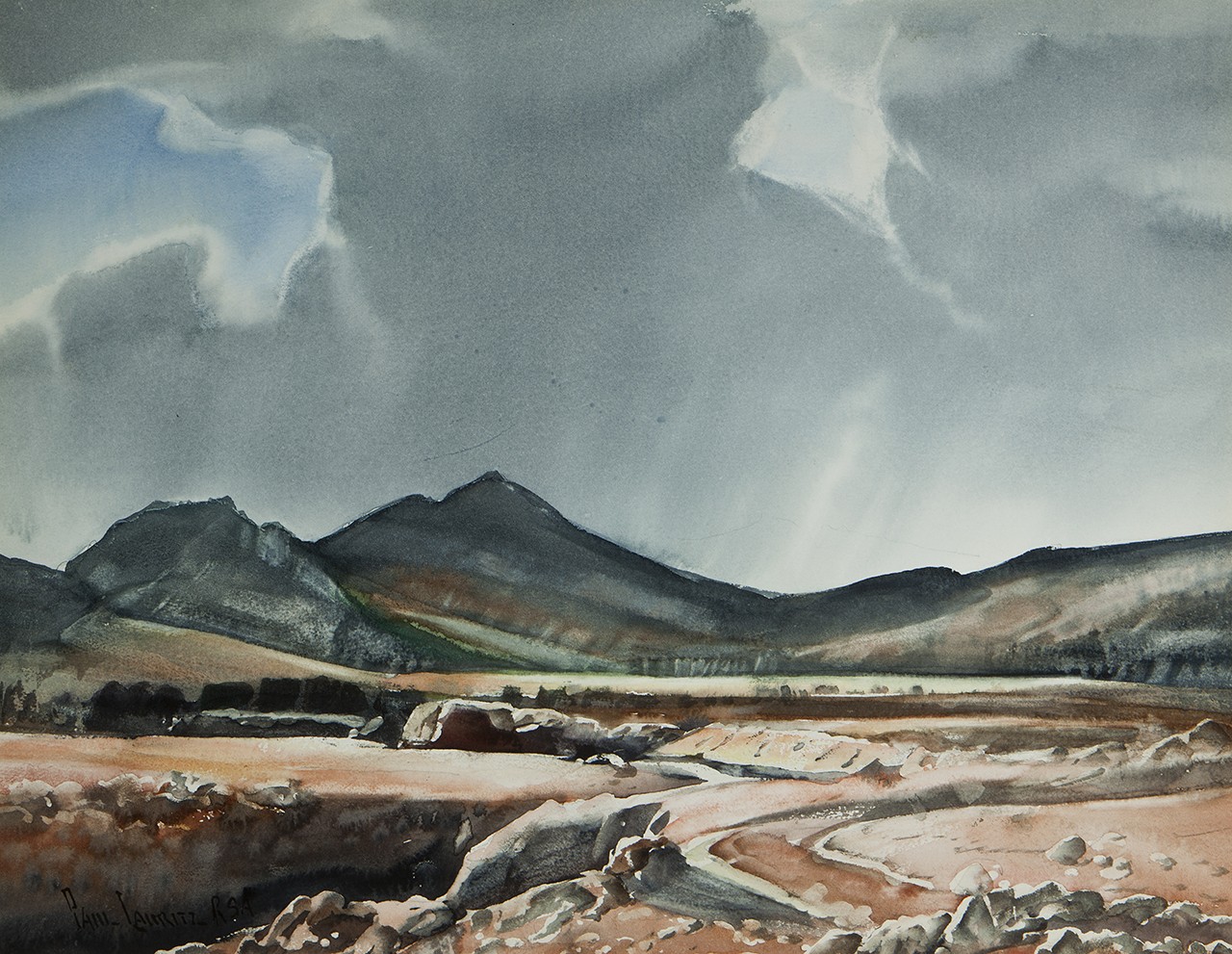 |
| 2018.6.19 Ann and Bill Cullen Memorial Collection |
Water and Color in the Desert
There may not be a wealth of scholarship about Lauritz' works, but they are very impressive on a technical level. The two watercolors featured in this post seem to have been created within a relatively short span of one another based on stylistic similarities. Because Lauritz never dated an artwork and there is no catalogue raisonné for his works, identifying a more exact date is impossible. In both paintings, the artist relies on the white of the paper to lighten sun-washed areas and mixes wet-on-wet and wet-on-dry techniques to create the indefinite forms of clouds, bushes, and water, with the well-defined silhouettes of mountains and curving shapes of riverbanks.
Text and images may be under copyright. Please contact Collection Department for permission to use. Information subject to change upon further research.

Comments